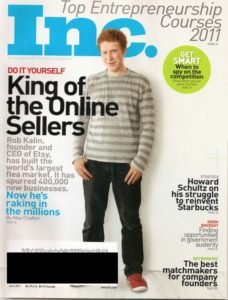 Sean Belnick was your average fourteen years old buying, trading, and selling Pokemon cards. Sean found out that he could sell his most expensive pokemon on eBay. This sparked Sean’s interest in selling things online, he started selling things online and started to make some good money for a fourteen-year-old. One summer Sean went to go work with his dad at his furniture store. When he was there he realized that he could sell furniture in a fast and easier way. When he discovered this he locked himself in his room for three days and made the website we know today as Bizchair.com. He did this with five hundred dollars for advertising and one hundred dollars for the website. He started by selling a handful of office chairs by drop-shipping them to his customers.
Sean Belnick was your average fourteen years old buying, trading, and selling Pokemon cards. Sean found out that he could sell his most expensive pokemon on eBay. This sparked Sean’s interest in selling things online, he started selling things online and started to make some good money for a fourteen-year-old. One summer Sean went to go work with his dad at his furniture store. When he was there he realized that he could sell furniture in a fast and easier way. When he discovered this he locked himself in his room for three days and made the website we know today as Bizchair.com. He did this with five hundred dollars for advertising and one hundred dollars for the website. He started by selling a handful of office chairs by drop-shipping them to his customers.
With his advertising, he started to gain more tracking as a company and when he was twenty years old he mad thirty-eight million in revenue. He has sold over twenty-five thousand office chairs to Microsoft, Google, and Abercrombie and Fitch. Sean was really a pioneer in the office chair industry. He was one of the first companies to sell large amounts of office chairs to consumers online. This made the buying process easier for companies by being able to buy large amounts of office chairs from one website. By doing this it streamlined the process of getting office chairs to the customers. Today Bizchairs has so many options for office chairs it appeals to a wide variety of people. Sean Belnick really changed the way people bought office chairs and has made some good money doing it.














